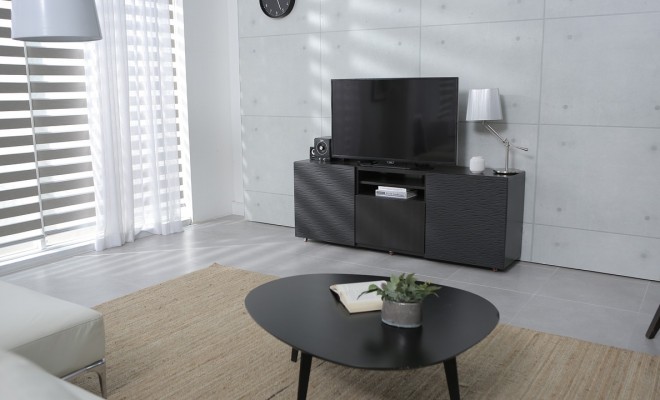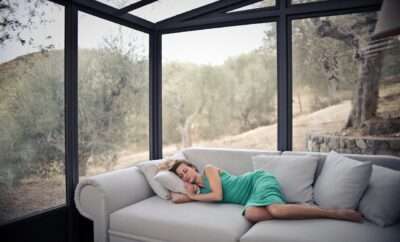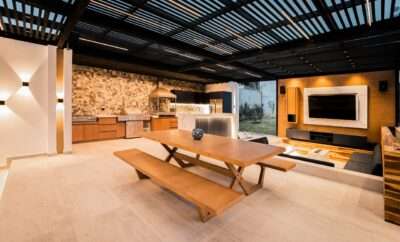
How to Use Shade to Cool Your Home & Cut Down Energy Bills
How to Use Shade to Cool Your Home & Cut Down Energy Bills
Australia has a warm climate and can reach high temperatures especially during the summer months. As a result, there is a need to cool our homes for comfort. According to the Australian Government, roughly 40% of household energy is used for heating and cooling. However, there are alternative ways of cooling your home that are cheap to implement and can greatly reduce the amount of energy used. In fact, a well shaded home alone can block up to 90% of the sun’s heat during summer. Shading your home is one of the simplest ways to reduce the heat entering your home and the following will explore some of the ways in which you can create shade to cover your home.
Passive cooling
Passive design is a strategy used in the design of buildings that responds to the surrounding climate to maintain comfortable temperatures. There are many passive (non-mechanical) ways you can re-design your home for cooling including insulation, window design, ventilation and shading. Understanding the orientation of your home and therefore the angles in which the sun enters your home, and at which time of the day, can allow you to use different shading techniques to reduce the amount of sun entering your house.
Plants
External shading such as trees, eaves and awnings are far more efficient means of cooling your house than internal blinds and curtains. Plants not only block sunlight from entering your home, by shading the exterior, but they also keep your house cool. It is a small cost to plant new trees and other plants around and can save you a lot in energy costs in the long run.
Deciduous trees can be great for this purpose as they will provide shade and keep your house cool during the warmer months, and shed their leaves to allow the sunlight in throughout the winter months. They should be planted to shade the windows facing east, north and west to reduce glare and heat gain. You may also consider planting ground cover plants in the place of paving to keep the temperature of the ground lower and reduce the amount of reflected heat during the warm months.
Window shades and awnings
Installing shades and awnings is another affordable way to cool your home in summer. Awnings reduce the heat in your home by controlling the heat gain and sunlight that enters through your windows. Awnings can block up to 77% of the heat from the sun that comes through windows. They also have the additional benefits of blocking UV rays that can damage your carpets, furniture and artworks and can work to hold in the heat during the cooler months.
The direction your home faces has a significant impact on the temperature. Australian homes will ideally face north to allow for sun exposure during winter and shading in the summer. However, for buildings facing other directions there are design tips you can use to help reduce the heat entering the windows. East and west facing windows experience more heat gain in hot climates due to the low sun angles that eaves or pergolas aren’t able block. Because of this, vertical shading should be used to allow light and ventilation into the home, while blocking out the sun.
What else can I do?
Shading your home is a great way to reduce heat without having to use power, however there are other ways to help cool the house and maximise the effectiveness of shading.
1. Insulate
A home without insulation in the ceiling can create up to 35% more heat inside, so have an expert install insulation into your home if you don’t already have it. It’s important to note, however, that insulation must work in combination with good shading. Allowing direct sunlight into an insulated home can turn your house into an oven during summer.
2. Reflect the sun
It’s important to also try and reflect the sun off the roof and walls of your home. Reflective paint or light shades can reflect sunlight, UV rays and infrared radiation, reducing the amount of heat that reaches your home. If you’re not in a position to re-paint your home, another option is to hang white, or light coloured materials in the windows to reflect some of the heat coming in.
3. Ventilation
To avoid using air conditioners and fans, you can use natural airflow to cool the home. On very hot days, keep windows and doors shut during the day and only open them when the outside temperature is lower than the inside. You can also strategically plant bushes and trees to channel breezes towards your home.
Cooling your home
Keeping your home cool during the summer months doesn’t have to involve using large amounts of energy. By understanding the orientation of your house and and using shading to block the sun from entering through the windows, you can significantly reduce the amount of heat coming in and as a result, keep your house cool naturally and lowering your energy bills.
Related reading: How interior decorating reflects personality.
DIY, gardening, design lover and doting dad. I want to bring practical and beautiful together in the one design.














